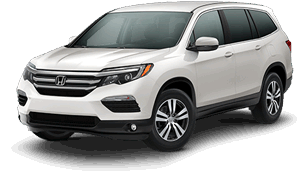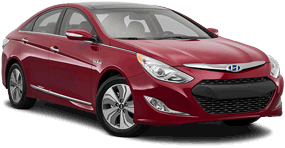You often hear driving enthusiasts lament the decline of rear-wheel drive. They cite a separation of steering and power, proper balance and the undeniable boost of excitement that comes from every rear-wheel drive car as the reasons for their sorrow of its slow demise and

While enthusiasts certainly have a point about the merits of rear-wheel drive, front-wheel drive proliferation came about for practical reasons. Most front-wheel drive cars are designed inclement weather capability and for the person who will rarely push their car to its limits, and for those people front-wheel drive is all they’ll ever need.
The majority of cars on the road today are front-wheel drive – the Toyota Camry, Honda Accord, Kia Optima and Chevy Sonic are all popular models that have front-wheel drive standard. This is true for two main reasons: cost and better traction in poor weather conditions. Front-wheel drive cars may sometimes be cheaper to produce (due to fewer components and less complex manufacturing) and tend to get better gas mileage, making them a great option for most shoppers. They also handle well in poor weather conditions because the engine’s weight is over the wheels that drive the car. These two factors have led to a very positive perception of front-wheel drive cars.
Front-wheel drive comes with some issues
The problems with front-wheel drive arise when the car is pushed to its limits. Due to the car’s configuration, it’s generally more nose heavy that rear-wheel drive cars, which hinders its handling capabilities because the car is often improperly balanced.
“ Once you lose traction in a FWD car, you’ve lost the ability to steer and in many cases stop or accelerate as you want to. ”
Additionally, front-wheel drive cars are prone to torque steering. This occurs when powerful torque from the engine affects the steering of the car. Different cars experience this to different degrees, but the bottom line is that it is unpredictable and can be dangerous. If you drive your car carefully, torque steer shouldn’t be too much of an issue, but if you prefer to push the envelope, enjoy your drive and burn a little rubber from time to time, it can be more than just a little annoying. You're also asking your car to handle the majority of braking, turning and acceleration at the same time. It's like wearing office shoes for work, exercise and a fancy dinner out. They can't do everything with excellence.
The final issue with front-wheel drive is that once you lose traction, you’ve lost the ability to steer and in many cases stop or accelerate as you want to. This occurs most often in poor weather conditions. The bottom line is if you start to slide in a front-wheel drive car, you’re going to have more trouble controlling where you’ll end up than in a rear-wheel drive car. These are all things that are unacceptable for many driving enthusiasts.
Rear-wheel drive is the answer for enthusiasts
Sophisticated designs and brilliant engineering across the automotive industry have reduced the issues of front-wheel drive to the point where most people won’t even notice, but they still rub enthusiasts the wrong way. People who love to drive like to push their cars to the limit and drive them a little harder than the average person. This means they want a car that they can control and have fun with.
Rear-wheel drive cars are better balanced and feature a separation of power and steering, which eliminates the issues that come with front-wheel drive. Also, many enthusiasts claim improved acceleration because of the shift in weight when accelerating from a stop and through turns. Still, if you don’t know how to handle the power the engine pumps to the rear wheels, you can get yourself into some serious trouble, especially when the weather gets bad, as traction is an issue with rear-wheel drive cars.

Enthusiasts know how to control their cars well and don’t want too much to get in the way of their driving experience. That’s why cars that are known as “driver’s cars” usually have rear wheel drive. BMWs, certain Cadillacs, any of the heralded American muscle cars – like the Ford Mustang or the Chevy Camaro – and the always fun Mazda Miata all have rear-wheel drive. So, the question isn’t should you get rear-wheel drive, it’s do you want to learn how to drive well and really enjoy the experience of getting behind the wheel? We know what we’d choose.


